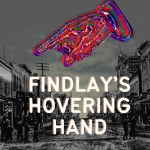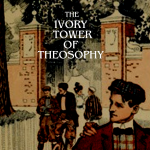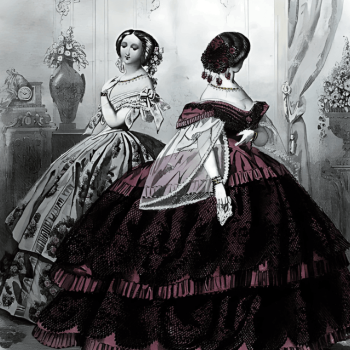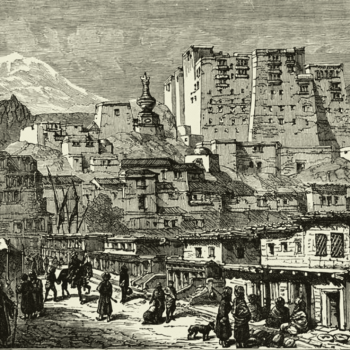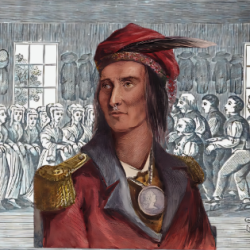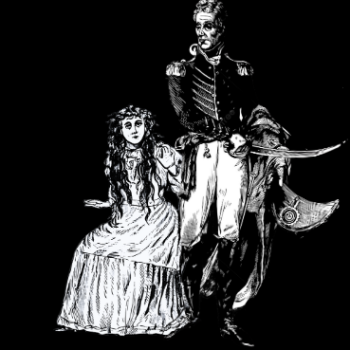“It is not true that I was converted to Spiritualism by the Fox sisters,” said Emily B. Ruggles, to a reporter of The New York World in late March 1893. “I have been a believer in Spiritualism for over forty years.”
Emily was a slender woman, in the brighter side of sixty. She looked quite motherly sitting in the in the parlor of her home at 492 State Street, Brooklyn. The house itself was old-fashioned, with brick exterior, with a small areaway. The front door (nearly level with the street) opened directly into a cozy reception room that was furnished with articles and curious of seemingly great antiquity. On the walls were hung pictures of famous Mediums, Spiritualists, and Theosophists. A photograph of Madame Blavatsky was hung just above the sofa where Emily was sitting. There was also a collection of spirit-photographs. Henry J. Newton, “an amateur photographer of considerable repute,” and-one time President of the First Society of Spiritualists, conducted experiments involving spirit-photography in the house in the 1870s.[1] Emily was the “guardian angel” of the young Spiritualist girls, and her home was their haven. Within those walls sheltered the likes of Madame Blavatsky, Diss Debar, Victoria Woodhull, Tennessee Claflin, in the days when these women were persecuted. The most recent guest, Margaret Fox Kane, never left. That was the reason for the interview.
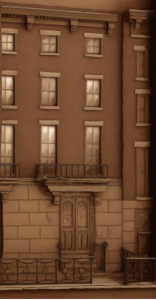
492 State Street.[2]
“My mother went with me and joined a Shaker colony at Mount Lebanon, when I was but five years of age, and I there acquired a belief which has never since been shaken,” said Emily. “It is not true, as generally stated, that the Fox sisters first introduced spirit rappings. The raps were produced and understood among those Shakers of that early day.”
“You have entertained many famous people here,” said the reporter, as he glanced at the photographs.
“Ah, I see you are looking at the photograph of Madame Blavatsky,” said Emily. “Yes, she was one of the many Mediums who sought shelter here, Madame Blavatsky spent about four months with me here during the time when she was a medium and before she conceived the idea of springing Theosophy. She was a jolly, good-natured woman, an unscrupulous trickster, and I know if she were alive now, she would be the first to appreciate the funny side of the adulation which she receives from the Theosophists. She was a good medium, but gave it up for something out of which she could make more money. She was a remarkably brainy woman, spoke seven languages and was entirely free from religious scruples. I used to call her my Russian bear because she ate so much.”
“Then she didn’t live on angel cake?”
“No. She was passionately devoted to her cigarettes. Between two cups of coffee at breakfast she would have to smoke a cigarette, the stub of which she never failed to lay on my damask table-cloth to burn a hole therein. When I chided her for her carelessness, she would laugh a merry laugh and say: ‘I will give you all the purgatory you want on earth.’ She referred to the Spiritualist’s belief in purgatory, which is similar to the Roman Catholic Church.”
“Then you know more of her real life than the disciples did?”
“Yes, indeed I do,” Emily replied. “Blavatsky was married to a Russian dignitary when she was sixteen. Two months later she broke a chandelier over her husband’s head and came to America. When she first came to me, she was simply Helen Blavatsky. It was I who gave her the title ‘Madame,’ which always stuck to her. I thought she was too remarkable to be anything less dignified than Madame. When money came in very light from séances, she began looking around for something in which there was more money.
“It was then that she met Colonel Olcott at the house of the Eddy brothers. She was a woman who was very eager for money, although she received an annuity from Russia. At first, she and the Colonel discussed the advisability of a matrimonial bureau, but gave that up when Theosophy suggested itself to them. With what delight she used to tell me how much money there was in securing Theosophical converts at $5 per head! It was about this time that she married Betinelli, a wealthy Russian, and went to Philadelphia to live. When I asked her if I should address her as Madame Betinelli she laughed in scorn and said, ‘You would not call me Madame Brown because I wore a brown dress, would you? Address me as Madame Blavatsky.’
“Six months later she returned from Philadelphia with a thousand dollars’ worth of clothing, but without her husband, My husband, Dr. Ruggles, the Medium, had some trouble afterwards in collecting $100 due for board by the madame. Colonel Olcott finally settled the bill only after my husband had signed a statement, in which he expressed a belief as to the personal purity of the madame, who occupied rooms adjoining Colonel Olcott’s.”
“She had some interesting personal traits,” suggested the reporter.
“Madame as a liar was really sublime,” said Emily. “On one occasion she brought into a circle of Spiritualists four oil paintings, which she said she had painted in an hour each. I learned afterwards that they had been left in her rooms by an English count, who was flying his board bill. Occasionally I meet Theosophists new, who in their ridiculous way express their envy of me for having been so intimate with the Chief of the Mahatmas. I never fail to tell them a thing or two either.”[3]
SOURCES:
[1] Quaestor Vitae “The Real Origins Of The Theosophical Society: Pt. I.” Light. Vol. XV, No. 776 (November 23, 1895): 569-570; Quaestor Vitae “The Real Origins Of The Theosophical Society: Pt. II.” Light. Vol. XV, No. 777 (November 30, 1895): 577.
[2] AI Enhanced image from: “Their Sheltering Arms.” The World. (New York , New York) April 2, 1893.
[3] “Their Sheltering Arms.” The World. (New York , New York) April 2, 1893.


